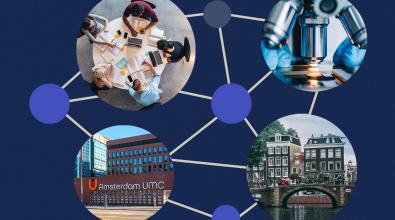 Read More
Read More
Sharing data helps cities take anticipation to the next level

Listen to This Article
Cities with robust data operations often aim to use that capacity to both manage performance and anticipate emerging challenges. It’s a pursuit that New York City helped pioneer as far back as 2010, when it began more systematically using predictive analytics to better spot nascent trends and fine-tune resource allocation accordingly. However, scaling these efforts citywide has often been challenging due to barriers in data sharing across any given city’s agencies.
Now, as more cities enhance their data capabilities, many are also prioritizing breaking down these silos—building on the vision set by New York and other major cities over a decade ago: to share and integrate data to anticipate and prevent problems before they escalate. Whether that means protecting people from potential housing displacement or micro-targeting personalized support for youth who appear likely to miss school, here’s how two cities—Charlotte, N.C. and Recife, Brazil—are using stronger internal collaboration to power data-driven anticipation.
Sharing data to better detect weak signals.
One way cities are improving their predictive efforts is by connecting the dots between indicators of weak signals that are dispersed across departments. In Charlotte, a city of about 900,000 residents, this means building new relationships between the housing and water departments in order to share data that helps forecast—and head off—potential displacements.
As in many other cities, Charlotte’s water utility has long recognized that water shut-offs and bill delinquencies can help identify residents in need. Similarly, housing officials know that property records and code violations can help spotlight landlords whose disregard risks displacing their tenants. But the agencies had never worked together in a systematic, data-driven way toward their common priority of helping residents stay in their homes.
Now, the housing department will be sharing a running list of properties already deemed at high risk for displacement with their colleagues at the water utility. If one of those properties falls behind on water bills or is poised to have its water shut-off, it will be flagged back to the housing department as an imminent threat, triggering a suite of interventions, from financial assistance for troubled landlords to, in extreme cases, connections for tenants with relocation services.
According to Stephen Goldsmith, director of Data-Smart City Solutions at the Bloomberg Center for Cities at Harvard University, who previously served as mayor of Indianapolis and deputy mayor in New York City, this represents a significant evolution of collaboration to enable predictive data use in cities.
“Most cities can’t yet do what Charlotte can,” he explains. “Because even if the city owns a water utility and another city agency wants to try to intervene to predict evictions, they’re not yet sharing data across those agencies.”
Integrating data for early outreach.
In Recife, a city of 1.5 million people situated at the easternmost point of Brazil, staying ahead of future predicaments isn’t just a benefit of an increasingly data-driven approach to governance—it’s one of the reasons behind it. Mayor João Henrique Campos has made anticipation, rather than only rapid response, a priority of his administration. And one of the most visible examples of this work is how his city is using better data integration and collaboration across agencies to identify young residents poised to miss out on daycare and school—and then providing targeted help before it’s too late.
“Our goal is to be proactive and anticipate people's needs for everything—with all public services,” says Cecília Cortez da Cunha Cruz, deputy secretary of education and part of the city team coordinating data strategy in Recife. That’s especially true for early-childhood development, which the city knows affects not only children’s futures, but also that of their families and the wider community.
This effort started once officials saw that better information about at-risk youth could give them a better handle on a host of social challenges. So they integrated federal social-assistance data and local health data into the municipal education system in order to build a dashboard that, among other activities, tracks when especially vulnerable children are not enrolled in daycare or school despite being eligible. More important than the data products the city has assembled is how the city acts on the data: Families deemed high priorities (because of risk factors ranging from parents being incarcerated to extremely high poverty) receive in-person appeals from public-sector employees. And these are staff from across local agencies, often those they’ve already met, who can then help usher them through every step of daycare and school enrollment.
“The innovation comes from joining the databases and making sure that we do something with this information by mobilizing different public workers,” Cruz explains. For example, she adds, “We mobilize health workers who wouldn't otherwise talk about the enrollment process, but they would already be in that family home for another reason. So why not make sure that when they're there, they not only tell them about the enrollment process, but help the family to go through the form?”
In other words, this city isn’t so much developing cutting-edge data products as it is finding creative, cross-departmental ways to apply knowledge gleaned from that data—all while looking ahead on behalf of residents.
One through-line for these efforts is that cities aren’t waiting for new social problems or complaints and then reacting. Instead, by going the extra mile to think ahead—and better sharing and integrating data to enable action—cities are stopping problems from emerging in the first place, and sending a clear message to residents.
“When a city says, ‘We prevented this outcome,’ it's a much better story than saying, ‘You told us you had this problem and we fixed it,’” explains Alexx Baerwald Simard, practice manager at the Bloomberg Center for Government Excellence at Johns Hopkins University, who works with Charlotte as part of that city’s participation in the City Data Alliance. “It’s taking that extra step from the customer-service perspective.”

